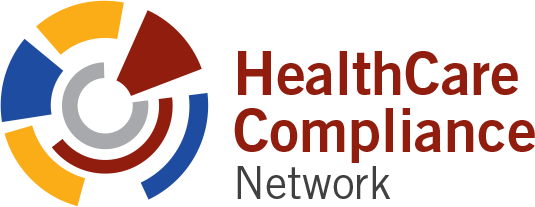The healthcare industry, and physician practices in particular, are experienced at weathering industry disruptors and a landscape that seems to be in perpetual change. However, the last few years have seen a notable increase in mergers and acquisitions, with all indications that this trend will continue. Factors such as pandemic impact and recovery, regulatory and technological changes and requirements, as well as the growth of Value-Based Care, have made it more challenging for independent physicians and practices to remain unaffiliated.
The Physicians Advocacy Institute (PAI) and Avalere Health conduct an ongoing review of financial investment in the medical industry. Their latest report on Trends in Physician Employment and Acquisitions of Medical Practices: 2019-2021[i] found a significant jump in independent practices being acquired either by a hospital system, or by a private equity or other corporate firm. The study found that in a 3-year period, over half (52.1%) of physician practices are owned by hospitals and corporate entities (including private equity firms and insurance companies). Hospital and health system acquisitions saw a 9% growth, while corporate entity acquisitions increased by a staggering 86%.
These acquisitions can be a big win for an independent practice, but it is important to understand your options and their nuances to make the best individual choice. Compliance plays a key role in the health and viability of each option. HCN has been involved in hundreds of healthcare acquisitions, and we have analyzed compliance trending over many years. Regardless of which option you chose for your practice, the process is more efficient and profitable when you involve a compliance partner at the onset. Here is a brief look at three overarching basic options for an independent medical practice and how compliance helps each option to succeed.
Option 1: Remaining independent. This can be done but is increasingly challenging. With Value-Based Care being the rule — not the exception — the technology requirements alone make it more difficult. One way to overcome obstacles to independence is to join a clinically integrated network (CIN) or an accountable care organization (ACO) if that is appropriate for your type of practice.
Compliance Recommendation: In this case it is highly recommended that you pull together your policy manuals for HIPAA, Compliance, OSHA, and an Employee Manual; and have site specific and state specific training for all staff. Additionally, you should run monthly checks against the Office of Inspector General’s (OIG) exclusion list, complete an annual security risk assessment, provide a compliance hotline, prepare an annual audit workplan and conduct a coding and chart audit (an external audit is recommended). Even if you join a CIN or ACO, these entities will want to see that you have a solid compliance program in place.
Option 2: Being Acquired by a Hospital System. Hospital Systems employ approximately 25% of all physicians so it is clearly a viable route. Though autonomy to make decisions about running your business is compromised (some see that as a plus), the financial side is beneficial as the providers get a significant revenue increase in reimbursement from payers because the hospital system is large and able to negotiate a rate lift from insurers. The bottom line is there is less hassle with billing, administrative and back-office duties, with a higher steady income. This is a pretty good combination, however owning your own practice and being entrepreneurial is now out of the picture.
Compliance Recommendation: In this case it is highly recommended that you pull together your policy manuals for HIPAA, Compliance, OSHA, and an Employee Manual; and have site specific and state specific training for all staff. Additionally, you should run monthly checks against the Office of Inspector General’s (OIG) exclusion list, complete an annual security risk assessment, provide a compliance hotline, prepare an annual audit workplan and conduct a coding and chart audit (an external audit is recommended). This will be looked at during the due diligence process and if these are not in place, in some cases, it could lower your value and a contractual caveat may be added that says you are liable for any compliance issues that may come up from the past.
Option 3: Being Acquired by a Private Equity Firm or Other Corporate Entity. This option has been wildly popular over the last 5 – 8 years. In fact, it is common to have hospitals and the PE firms competing for the same target. There are many nuances and at least several models. This is a general and non-encompassing description.
Overall, the PE firm wants to establish a platform on which they can acquire add-on practices that are of the same specialty and geographic proximity. By and large, firms look at a 5 – 7-year period to exit, with 5 years as a general goal.
The physician owners of the practice are encouraged to be aligned with the investors who oversee a whole C-suite of executives who run a Managed Services Organization (MSO), the legal structure/operational arm that manages the business. Patient care is of course, run by the clinical providers. Apart from working with a much larger entity with specific business goals at-hand, the group’s day-to-day practice of medicine is business as usual.
Financially, the physician owners are given cash up front, an employment agreement with incentives, and some equity so that they can work with the new organization to have a successful second, and maybe third, liquidity event. This helps to maintains alignment with the acquiring firm. With this model, the physician still has some ownership and entrepreneurial motivation.
Compliance Recommendation: In this case it is highly recommended that compliance is involved early and often, as the stakes are much higher. For a practice considering this route, it is wise to do a dry-run due diligence for an assessment to see where they are at 6-18 months before going to market. Compliance is a large part of this, and even if it results in unfavorable news, you should have time to fix it, and you will now know where some risks may lie. With due diligence, all areas of compliance will be closely scrutinized. The most analyzed area is billing and coding audits, but you will also be asked if you have policy manuals, training, and if you’ve gone to the next level to implement and proceduralize your policy manuals specific to your organization. Post -acquisition, your new organization should have an active compliance program in place and during your onboarding they will roll you into their culture of compliance and will work with you on implementation and ongoing compliance. Regardless of your chosen direction, an up-to-date and active compliance program will help assure your financial success.
[i] Physicians Advocacy Institute, COVID-19’s Impact on Acquisitions of Physician Practices and Physician Employment 2019-2021. Prepared by Avalere Health. April 2022. Retrieved March 16, 2023, from www.physiciansadvocacyinstitute.org/PAI-Research/Physician-Employment-and-Practice-Acquisitions-Trends-2019-21

